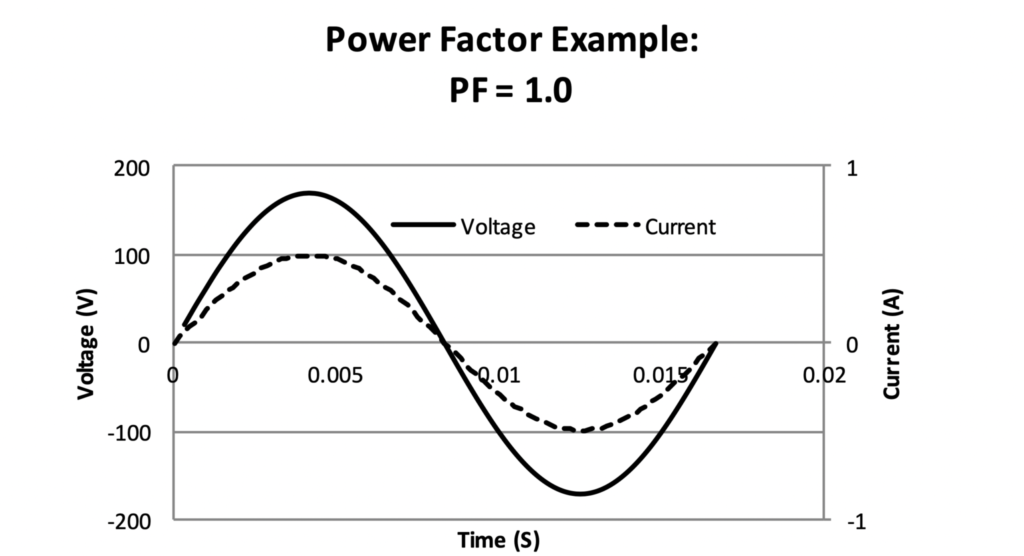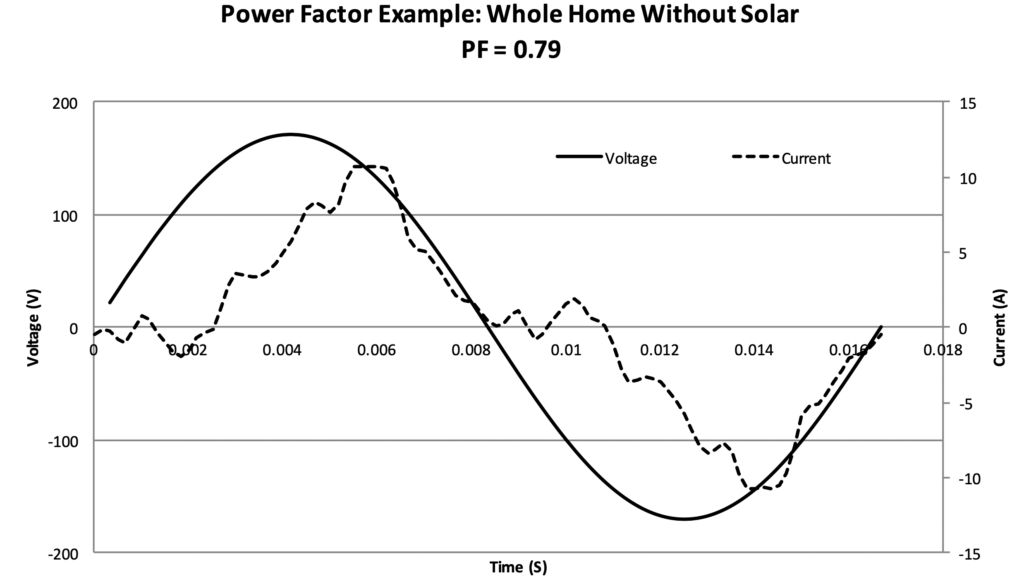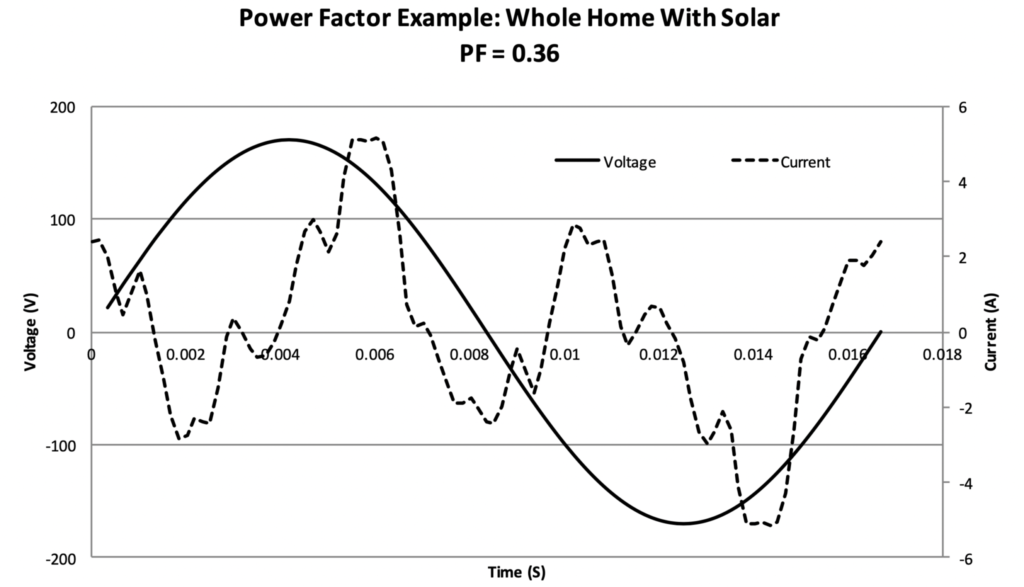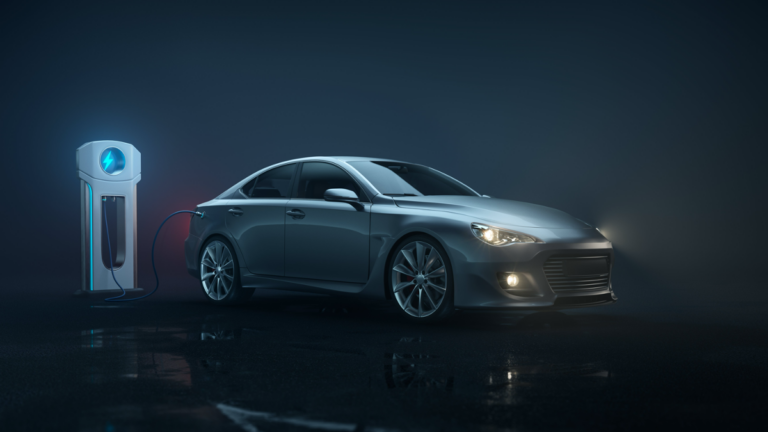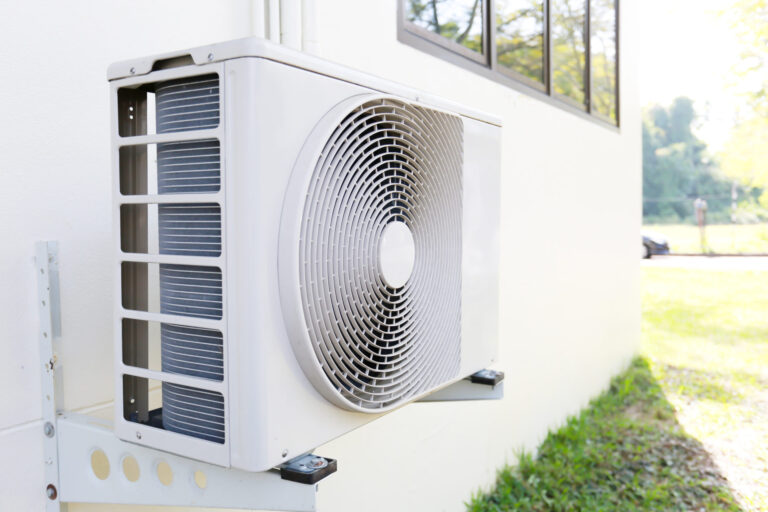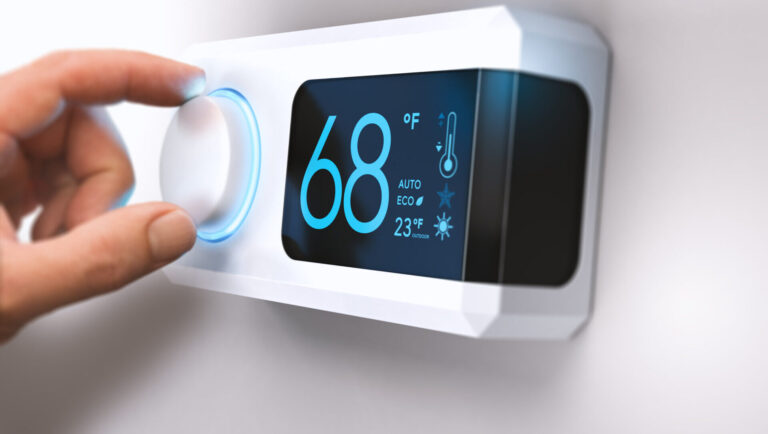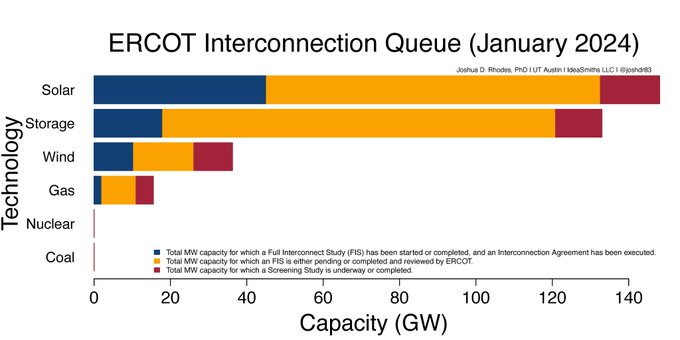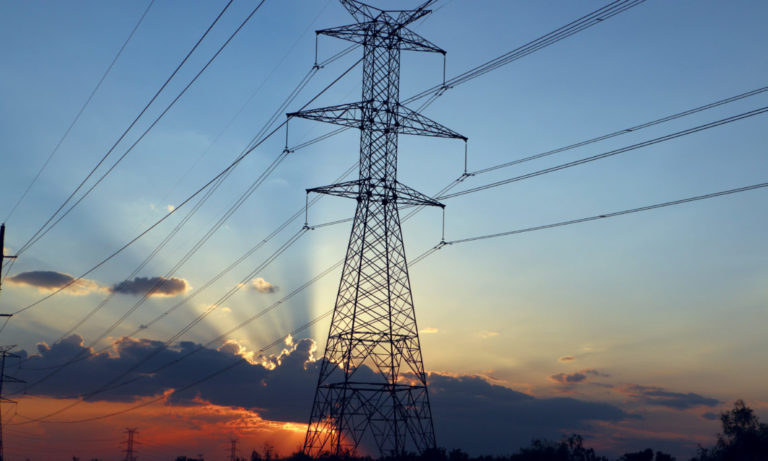February 18, 2019
 By Scott Hinson, chief technology officer, Pecan Street
By Scott Hinson, chief technology officer, Pecan Street
In a previous blog, I talked about a common and important measurement we use to manage the electric grid called power factor. I ended it with a tease that solar complicates the picture for residential power factor.
Here’s why.
Residential solar inverters typically only provide real power to the electrical grid. When they do that, the reactive power component (either the displacement or distortion current) isn’t affected. It stays on the grid. The real power draw of the house is minimized or even completely canceled. This means that the utility has to deal with the portions of the load – called reactive power – that reduce power factor.
As a reminder, the utility wants to see loads close to PF 1, as shown in the image below.
Even without solar, PF in a home is often .7 to .8, as in the second image, below.
Notice that the current isn’t the smooth curve as before. This means it’s harder for the utility to deliver power to the house.
Now, if you add solar to the mix power factor can drop considerably.
In this measurement (shown below), the home has a power factor of .36.
The current (dashed line) isn’t even a nice 60Hz waveform anymore. The utility control systems are all designed around 60Hz load current, so this can present some problems like distorted voltage, loss of voltage control and decreased lifetime of utility equipment. In your home, if these get bad enough this means things break faster, your lights flicker and you lose power more often.
If this were the only home in the neighborhood with this level of power factor, the utility really won’t see the difference or have any difficulty managing the electrical grid. However, at a high enough solar installation percentage, the utility will start to have problems.
In a future post, I’ll discuss how we can fix it.






